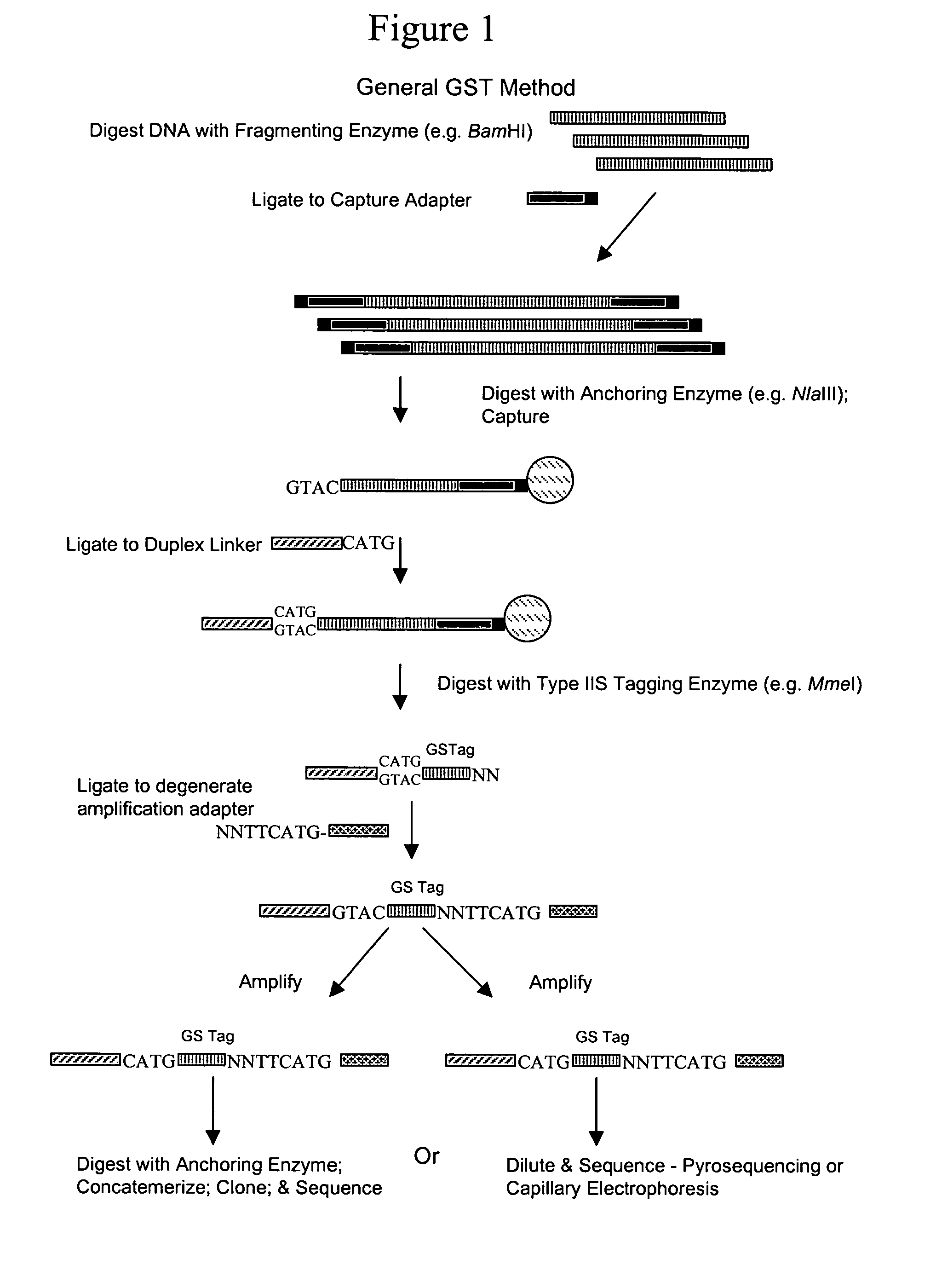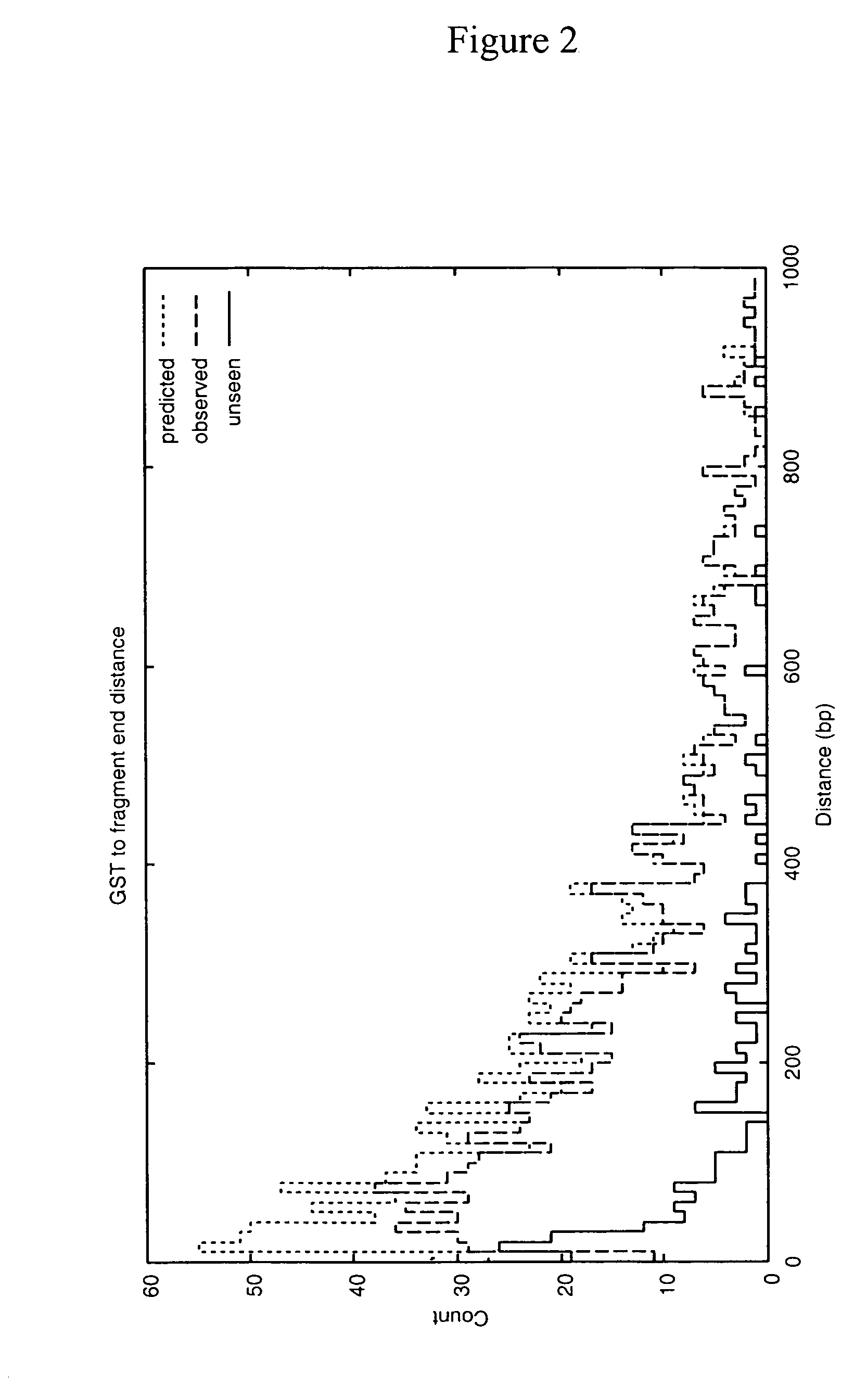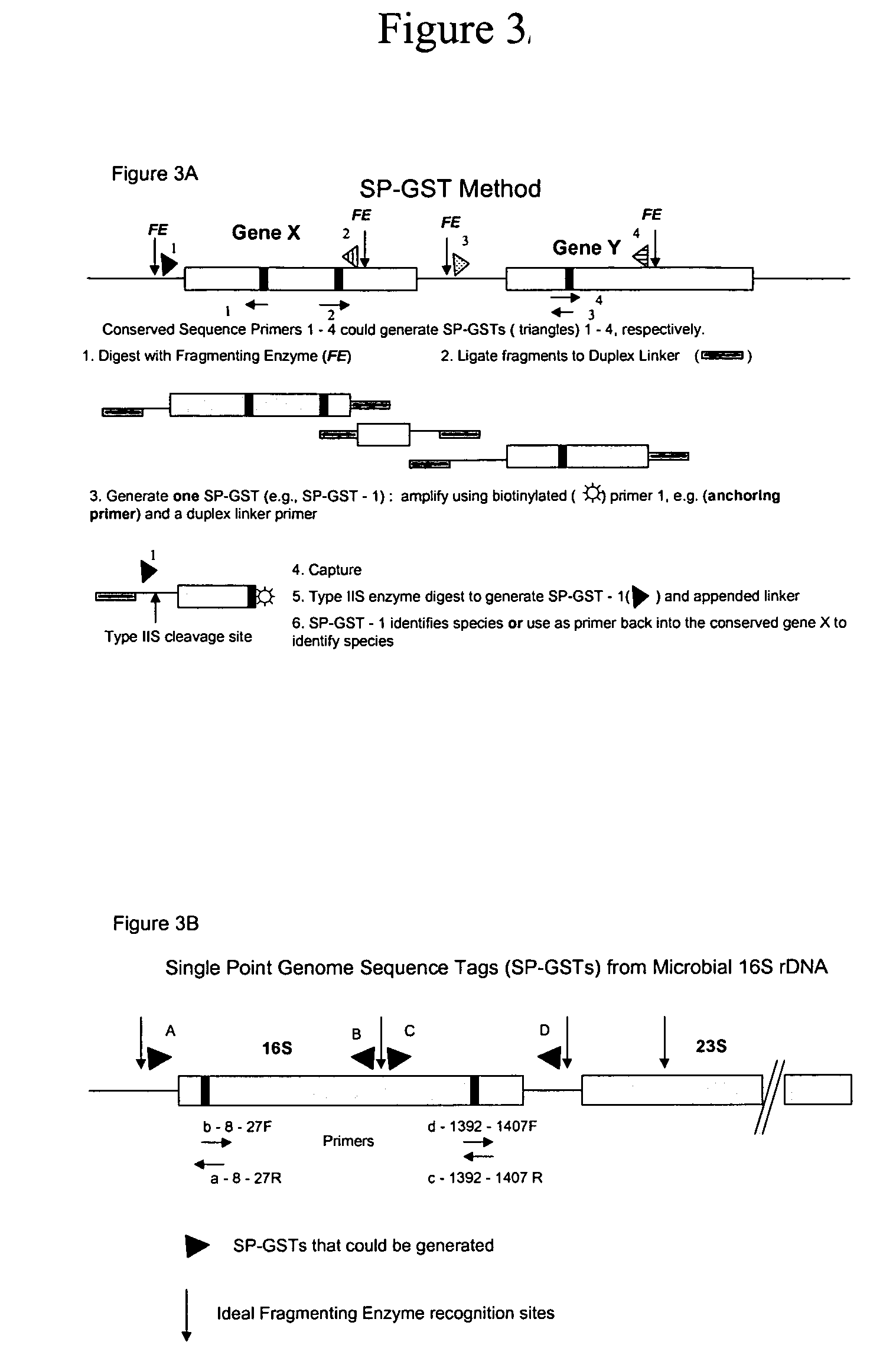Genome signature tags
a gene and signature technology, applied in the field of gene signature tags, can solve the problems of inability to directly identify novel sequences, limited use of relatively small fragments, and inability to quantify the multiplicity of organisms in a natural environmen
- Summary
- Abstract
- Description
- Claims
- Application Information
AI Technical Summary
Benefits of technology
Problems solved by technology
Method used
Image
Examples
Embodiment Construction
[0018]Overview
[0019]Disclosed herein is a method for obtaining and analyzing signature tags from nucleic acid samples prepared from specimens of various types and to use that analysis to identify and quantify the variety of organisms contributing to the nucleic acid sample (i.e., determining the organismic complexity of a sample). One aspect of the present invention relates to a cloning-independent method for analyzing the nucleic acid sample. Another aspect of the invention relates to the use of the GST methods to identify sequences that are hyper- (or hypo-) methylated. Yet another aspect of the invention relates to the use of subsets of GSTs to identify and quantify members of families of organisms contributing to the organismic complexity of a sample. Another aspect of the invention relates to generating a Terminal Restriction Fragment Barcode from sequences associated with GSTs to monitor stability and rapidly identify the occurrence of changes in the organisms populating a sam...
PUM
| Property | Measurement | Unit |
|---|---|---|
| pH | aaaaa | aaaaa |
| pH | aaaaa | aaaaa |
| temperature | aaaaa | aaaaa |
Abstract
Description
Claims
Application Information
 Login to View More
Login to View More - R&D
- Intellectual Property
- Life Sciences
- Materials
- Tech Scout
- Unparalleled Data Quality
- Higher Quality Content
- 60% Fewer Hallucinations
Browse by: Latest US Patents, China's latest patents, Technical Efficacy Thesaurus, Application Domain, Technology Topic, Popular Technical Reports.
© 2025 PatSnap. All rights reserved.Legal|Privacy policy|Modern Slavery Act Transparency Statement|Sitemap|About US| Contact US: help@patsnap.com



